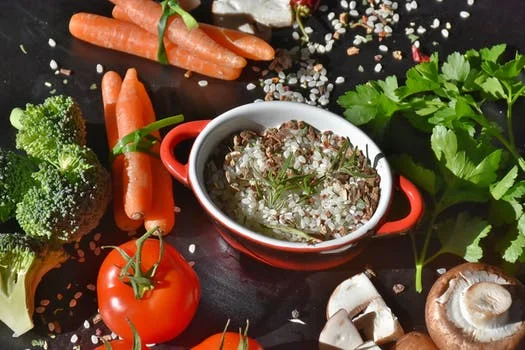What is the healthiest cuisine?
The 2017 World Health Index (1) released earlier this year, which graded 163 countries based on variables such as life expectancy, causes of death and health risks such as high blood pressure, malnutrition, the availability of clean water and tobacco use, resulted in Italy having the highest health index of 93.11. Over a third of the adults in USA are obese and the number is not dropping. This is a stark contrast especially with countries like Japan and India where the obesity rates are below 5% (2) . For a rich nation, Japan has extraordinarily low obesity. Apart from local culture, living environment and lifestyle, is the local diet an important factor to achieving such a high health index? The double-cheese pizza or the gooey lasagna, which are loaded with calories and fat can certainly not lead to the formation of what we can term as “the healthiest cuisine”. What makes a cuisine healthy or unhealthy? It is interesting to note how different cuisines are linked by similar ingredients and how specific ingredients help define certain cuisines, and how foods influence our health.
The Italian tradition of enjoying a leisurely meal is good for digestion. The star ingredients of this cuisine: tomatoes, olive oil, garlic, oregano, parsley and basil are what make it extremely healthy. Lycopene in tomatoes may be a protective agent for breast cancer. Garlic and traditional Italian herbs provide vitamins A and C, and olive oil helps lower cholesterol, fight heart disease and burn belly fat.
The distinctive flavors in Indian food from its array of aromatic spices are actually protective against some cancers. Turmeric and ginger help fight Alzheimer’s disease. The rates of Alzheimer’s in India are four times lower than in America. Turmeric, a main ingredient in curry, has anti-inflammatory and healing properties. Yogurt and lentils, which are commonly used in the Indian cuisine, have significant amounts of folate and magnesium, and may help stabilize blood sugar.
The Thai Tom Yung Gung soup made with shrimp, coriander, lemongrass, ginger, and other herbs and spices, possesses properties 100 times more effective than other antioxidants in inhibiting cancerous-tumor growth. The incidence of digestive tract and other cancers is lower in Thailand than in other countries. Thai spices like ginger aids in digestion, turmeric is an anti-inflammatory and lemongrass has long been used in Asian medicine to help treat colds and ease tummy troubles.
The culinarily diverse South America’s traditional diet of fresh fruits and vegetables (including legumes) along with high-protein grains like quinoa. In fact, a typical South American meal of rice and beans creates a perfect protein.
The Mediterranean diet consisting of traditional Greek foods like dark leafy veggies, fresh fruit, high-fiber beans, lentils, grains, olive oil, and omega-3-rich fish provide lots of immune-boosting and cancer-fighting ingredients that cut the risks of heart disease, diabetes, and other diet-related diseases. A traditional Mediterranean diet is associated with a 25% reduced risk of death from heart disease and cancer, apart from losing more weight and feeling fuller on this type of diet, which is rich in healthy fats, than on a traditional low-fat diet. This cuisine also ranks high in terms of health benefits because of how it is eaten. The Greeks often share small plates of food called ‘meze’. Spanish tradition of eating the ‘tapas’ (small plates of food) is similar. The Spanish cuisine consists of lots of fresh seafood, vegetables and olive oil, all of which aid in better health.
Fresh herbs, lots of vegetables and seafood, and cooking techniques that use water or broth instead of oils, are the standout qualities of traditional Vietnamese food. This cuisine relies more on herbs than on frying or heavy coconut-based sauces for flavor, which makes it lower in calories. Traditional Vietnamese additives including mint, Thai basil, and red chili have long been used as alternative remedies for all sorts of ailments, while cilantro and star anise have actually been shown to aid digestion and fight disease-causing inflammation.
The traditional Japanese cuisine, especially the version eaten on the island of Okinawa where people often live to 100-plus years, is rich in antioxidant-rich yams and green tea, cruciferous and calcium-rich veggies like bok choy, iodine-rich seaweed (good for thyroid), omega-3-rich seafood, shiitake mushrooms (a source of iron, potassium, zinc, copper, and folate) and whole-soy foods. They prepare these in the healthiest way possible, with a light steam or a quick stir-fry. They also practice Hara Hachi Bu (eat until you are eight parts or 80 percent full). These simple diet rules may be why people in Japan are far less likely than Americans to get breast or colon cancer.
Authentic Mexican cuisine’s emphasis on slowly digested foods like beans and fresh ground corn may provide protection from type 2 diabetes apart from being heart-healthy and even slimming. A Mexican diet of beans, soups, and tomato-based sauces helped lower women’s risk of breast cancer, a study from the University of Utah found.
It turns out that countries with big immigrant populations like the US and Australia tend to have the greatest culinary diversity, the greatest number of ingredients and the biggest variation between dishes. This is mainly due to immigrants bringing their native culinary culture with them, which in turn makes the cuisines of their target country richer. It would be only just to conclude that no cuisine ranks above the other in terms of being healthy, but there are common elements across eating patterns that are proven to be beneficial to health. A diet of minimally processed foods closer to nature, predominantly plants, is decisively associated with health promotion and disease prevention. Globalization (3) has played a crucial role to help enjoy global cuisines in their purest state while also consuming meals that are light, nutritious, and incredibly healthy.
References:
1. 2017 healthiest country index. Kelowna Now Web site. https://www.kelownanow.com/news/news/National_News/17/03/20/2017_healthiest_country_index/.
2. Bite" BW, "First. How the japanese diet became associated with a healthy lifestyle. Business Insider Web site. http://www.businessinsider.com/how-the-japanese-diet-became-associated-with-a-healthy-lifestyle-2016-5.
3. Ross AC, Caballero B, Cousins RJ, Tucker KL. Modern nutrition in health and disease. 11th ed. Philadelphia: Wolters Kluwer Health; 2012:1-3.



